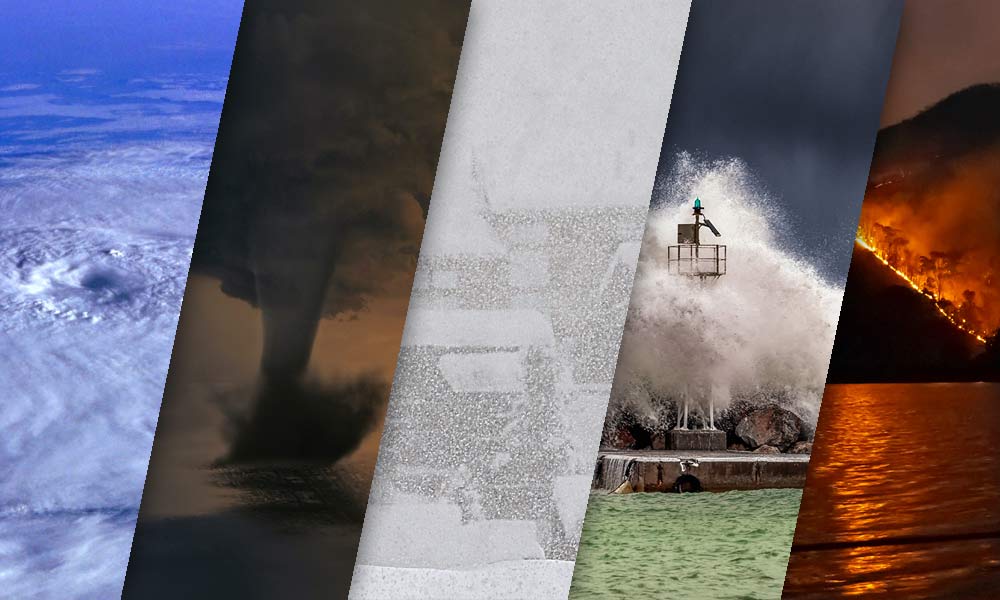This week, hurricane Ian ripped through Florida and up the east coast. Before the storm, a few stations asked us to help quickly create an emergency information page so they could refer to them on-air and over social to help get essential news out to their local listeners.
Do you have an emergency information page for a natural event that may affect your listeners? It’s unlikely that a hurricane will hit a station in Kansas, but they have their share of tornados. Tornados may not frequent places like upstate New York, but locations in the northern United States have blizzards. Other places may not have any of these but experience long periods of drought or be susceptible to wildfires.
If you have any natural events affecting your listeners, it’s a great idea to have an emergency information page on your radio station website to provide essential information when needed. It’s great for your listeners, and it provides you with an in-house location to refer to on-air instead of directing listeners somewhere else online.
So, let’s look at some elements of an emergency information page that you may want to include. These may or may not relate to your natural event, but they will give you a basis to start planning.
Before we jump in, it’s a good idea to have these elements on just one or two pages rather than spread across several. In an emergency, we should give the visitor the most information we can with minimal effort.
Elements of an emergency information page
1) Twitter/Facebook Feeds
Many municipalities update the public by posting to their Twitter or Facebook feeds because they know this is the quickest way to get information out. Embed these feeds on your emergency information pages to become a hub for everything the listener might need. Feeds you may want to follow include FEMA, your state emergency management agency, your regional NOAA weather location, state weather organization, and local police.
Additionally, you may consider embedding an RSS feed from another news source if their information is more up-to-date than what you can provide.
We typically do not encourage embedding social media widgets, and RSS feeds that link offsite. However, in a crisis, it becomes more important to get essential information to our listeners and visitors in the best way possible.
2) Current weather, radar, and alerts
If you have weather-related emergencies like tornados, blizzards, or hurricanes, try to include a current radar image to give the viewer a visual sense of where the weather event is.
Alerts are also helpful in the case of storms, as they typically give the location and forecast track, including towns and neighborhoods.
3) Live video reports
If your radio station partners with a local TV station, ask about embedding their live feed on your station emergency information page. Unless you have live people at the radio station tracking the storm, the TV station is likely giving their report looking at a live radar image. Get the proper embed code from the TV station well ahead of time. You’re not likely to get this information hours before or during a disaster.
You can also embed TV station graphics within your emergency and everyday weather pages. They typically update the same image each hour with current temps, etc. for their mobile app and other applications. You should be able to hotlink (or embed the image hosted on their server) on your page. This way, the information is always current.
4) Local Shelter Information
If you’ve never been involved in a natural disaster, you probably do not know that many people can be left without shelter. Include local shelter information on your emergency information page so your on-air team can direct listeners.
This area of your page might need to be revised more often as shelters can fill up. During a crisis, it puts people in danger searching for an open shelter, so it’s a good idea to keep this list current.
5) Checklists
Checklists are always useful but try not to go overboard. Only present the most needed information without overloading your pages with too much information. Perhaps list the two most important and then include links to the rest. Ready.gov and the National Weather Service have amazing guides to get you started.
6) Important numbers
Your emergency information page should not be a page full of links and phone numbers. Anyone needing a phone number or link will likely Google it before coming to your emergency information page. However, including numbers and links to local municipalities, first responders, hospitals, and schools is a great idea once accompanied by the other useful information we’ve mentioned here.
Be careful to limit this list also. If your page looks like a directory, you can expect little traffic. People will opt to Google a phone number over searching through a list.
Should you sell sponsorships on this page?
Absolutely. Think of everything your locals need to prepare ahead of a natural event. These include storm shelters, generators, snowplows, disaster insurance, building supplies, roofing, survival kits, etc. What others can you think of? There’s your list of potential advertisers for your emergency page.
Sponsorships can easily be yearly commitments. When I worked for Clear Channel, a tornado shelter company sponsored our emergency information page. They were reluctant to sign a yearly commitment for the sponsorship but did anyway. They didn’t receive much traffic or mentions during the off-season, but during tornado season, their exposure and traffic made it well worth the investment. It worked so well that they increased their spending to become the title sponsor of the page for several years.
Wrapping Up
The right time to create emergency information pages is not just before the event. Take the time to create these pages now, before the storm.
The more useful information you can provide on this page, the more valuable it will be to your visitor. And you’re more likely to get sponsors to jump on board.

